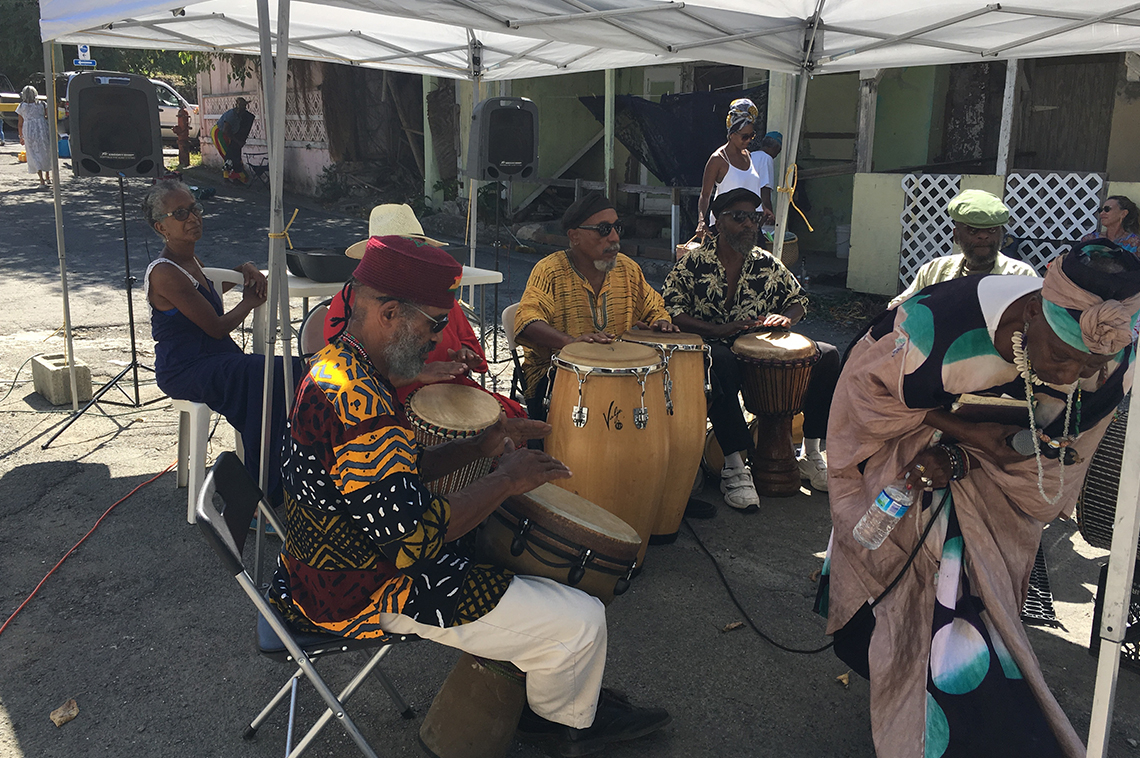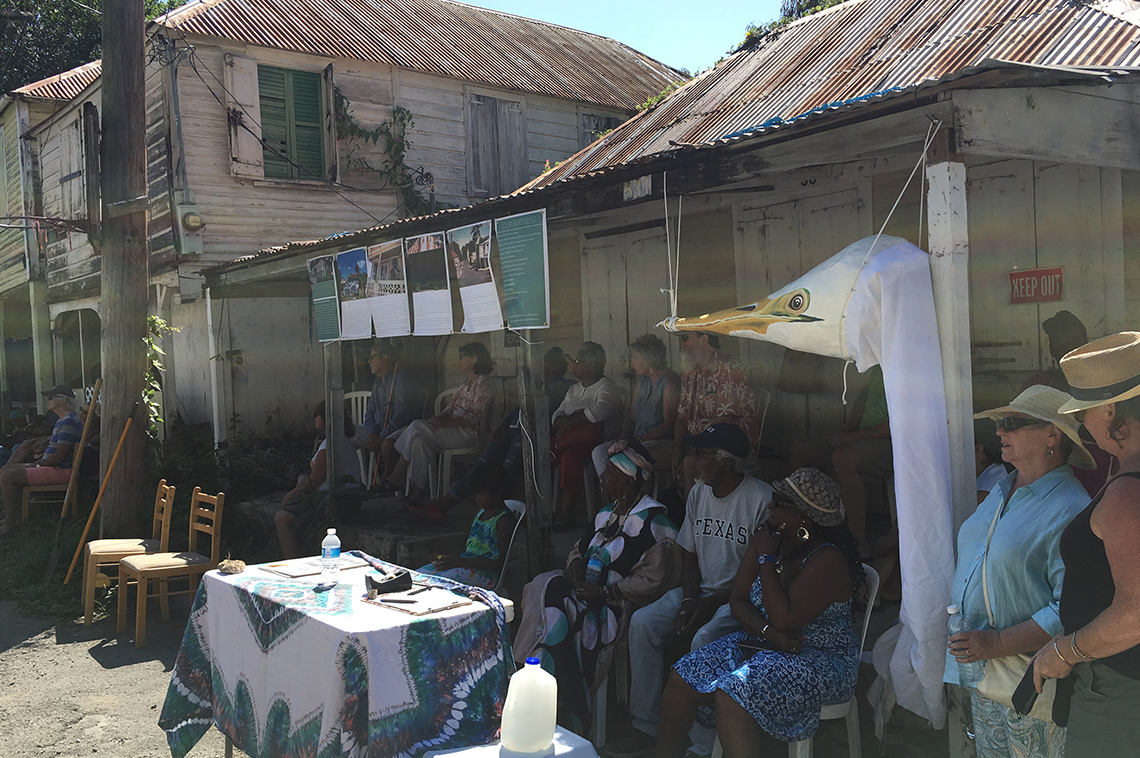

Invisible Heritage: Identity Memory and our Town (IH) is a project designed to address the long term problems of abandoned and derelict historic buildings in the town of Frederiksted on the island of St. Croix. When our application to ArtPlace was accepted and funded as a ‘workforce development’ project, our founders and partners were gratified – years of work and commitment were being rewarded. As a community based non-profit organization, CHANT has as its core mission, “development from within” – training and developing community members so that they can participate in the cultural heritage tourism industry not only as employees but as owners of businesses.
Workforce development in this context is designed to empower the participants in the IH programs to become masters in their field and fill the gaps in employment created by the loss of the traditional building arts skills. Currently artisans are imported from other Caribbean islands and from various countries in Africa and Europe when preservation and rehabilitation of local historical structures is conducted. IH will also promote the engagement of the community
We were challenged to create an Artisanal School and we have embraced the challenge and launched our Building Arts Institute and a Summer School for Public Art and Community Engagement. The creation of the Building Arts Institute as a certified job training program in the artisanal crafts ensures the continuation of our traditional building arts. Many of the master artisans in woodworking, silversmithing, blacksmithing and masonry are aging and we face the death of these important and ancestral crafts. Our Building Arts Institute provides training beginning with foundational skills and continuing with more advanced skill training in woodworking, masonry and blacksmithing. Our goal is to create a cadre of skilled artisans that we will then hire to restore eight historic buildings that were built in the late 18th century by free Black craftsmen. The trainees will not only become skilled artisanal craftspersons, they will also be stewards of our heritage and culture and their work will stand as a symbol of the rebirth of artisanal trades that are threatened. Preservation of traditional folk art and artistry will provide community residents with opportunities for better employment and will contribute to the community’s economic sustainability.
The Summer School for Public Art and Community Engagement provides a platform for participants to explore the history of Free Gut, Frederiksted, the historic black neighborhood where free blacks lived and worked. Participants are examining the root causes of community issues such as poverty and joblessness. Utilizing visual arts, performing arts and storytelling, participants will be encouraged to produce pieces for the community. Integral to the sustainable development of the community is positive change through leadership and advocacy training.
On July 10th 2017 we began our first skills training program. The first day participants were introduced to lithic technology and wood carving. The students created stone arrowheads that immediately became wearable art; the wood carvings, made with simple hand tools and fire, are masks - a traditional indigenous folk art form.
Our program doesn’t fit in a neat, traditional, workforce development package. It bridges skills training and job development by promoting folk art, the traditional building arts, history and culture.
“Invisible Heritage addresses the ways in which vernacular culture - creole architecture, music, dance, folk tales and other cultural forms – reveal the blind spots and hidden story of our colonial and imperial history in the US Virgin Islands.” - Monica Marin, Curator
Our program aligns with workforce development in that it promotes economic development strategies that focus on the people of the community through development from within. IH addresses skill gaps that have been created by industrialization and the resultant opportunity gaps.





